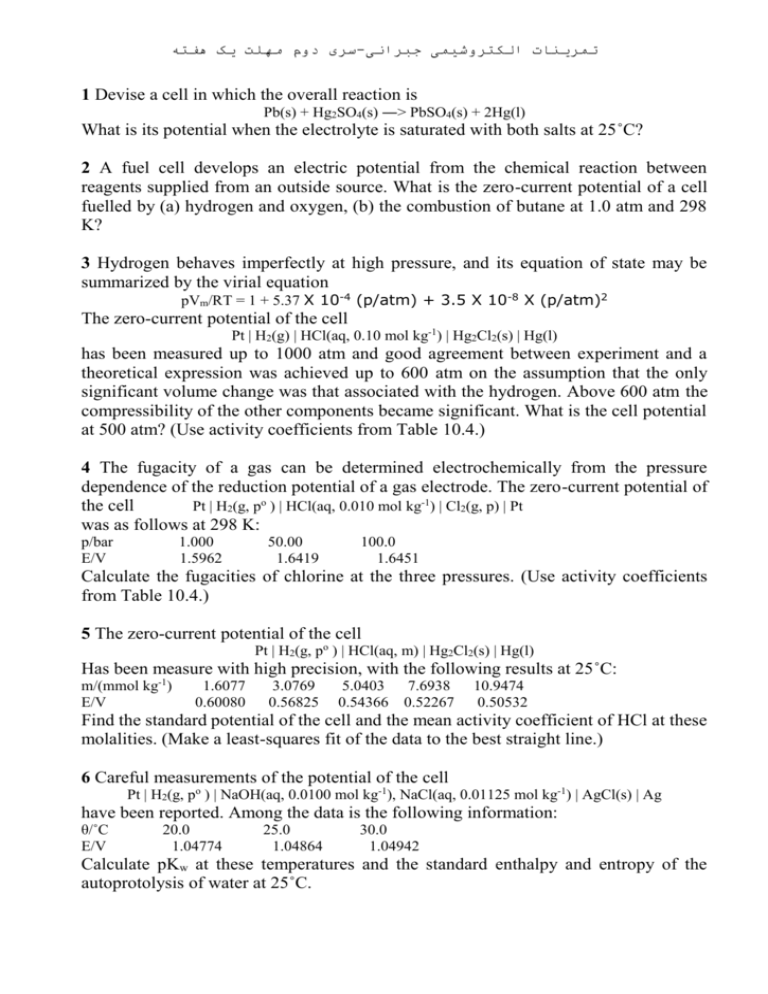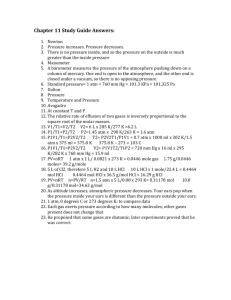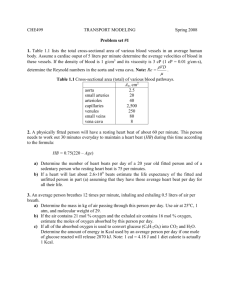Exercises2
advertisement

سری دوم مهلت یک هفته-تمرینات الکتروشیمی جبرانی 1 Devise a cell in which the overall reaction is Pb(s) + Hg2SO4(s) ―> PbSO4(s) + 2Hg(l) What is its potential when the electrolyte is saturated with both salts at 25˚C? 2 A fuel cell develops an electric potential from the chemical reaction between reagents supplied from an outside source. What is the zero-current potential of a cell fuelled by (a) hydrogen and oxygen, (b) the combustion of butane at 1.0 atm and 298 K? 3 Hydrogen behaves imperfectly at high pressure, and its equation of state may be summarized by the virial equation pVm/RT = 1 + 5.37 Х 10-4 (p/atm) + 3.5 Х 10-8 Х (p/atm)2 The zero-current potential of the cell Pt | H2(g) | HCl(aq, 0.10 mol kg-1) | Hg2Cl2(s) | Hg(l) has been measured up to 1000 atm and good agreement between experiment and a theoretical expression was achieved up to 600 atm on the assumption that the only significant volume change was that associated with the hydrogen. Above 600 atm the compressibility of the other components became significant. What is the cell potential at 500 atm? (Use activity coefficients from Table 10.4.) 4 The fugacity of a gas can be determined electrochemically from the pressure dependence of the reduction potential of a gas electrode. The zero-current potential of the cell Pt | H2(g, pο ) | HCl(aq, 0.010 mol kg-1) | Cl2(g, p) | Pt was as follows at 298 K: p/bar E/V 1.000 1.5962 50.00 1.6419 100.0 1.6451 Calculate the fugacities of chlorine at the three pressures. (Use activity coefficients from Table 10.4.) 5 The zero-current potential of the cell Pt | H2(g, pο ) | HCl(aq, m) | Hg2Cl2(s) | Hg(l) Has been measure with high precision, with the following results at 25˚C: m/(mmol kg-1) E/V 1.6077 0.60080 3.0769 0.56825 5.0403 0.54366 7.6938 0.52267 10.9474 0.50532 Find the standard potential of the cell and the mean activity coefficient of HCl at these molalities. (Make a least-squares fit of the data to the best straight line.) 6 Careful measurements of the potential of the cell Pt | H2(g, pο ) | NaOH(aq, 0.0100 mol kg-1), NaCl(aq, 0.01125 mol kg-1) | AgCl(s) | Ag have been reported. Among the data is the following information: θ/˚C E/V 20.0 1.04774 25.0 1.04864 30.0 1.04942 Calculate pKw at these temperatures and the standard enthalpy and entropy of the autoprotolysis of water at 25˚C.









